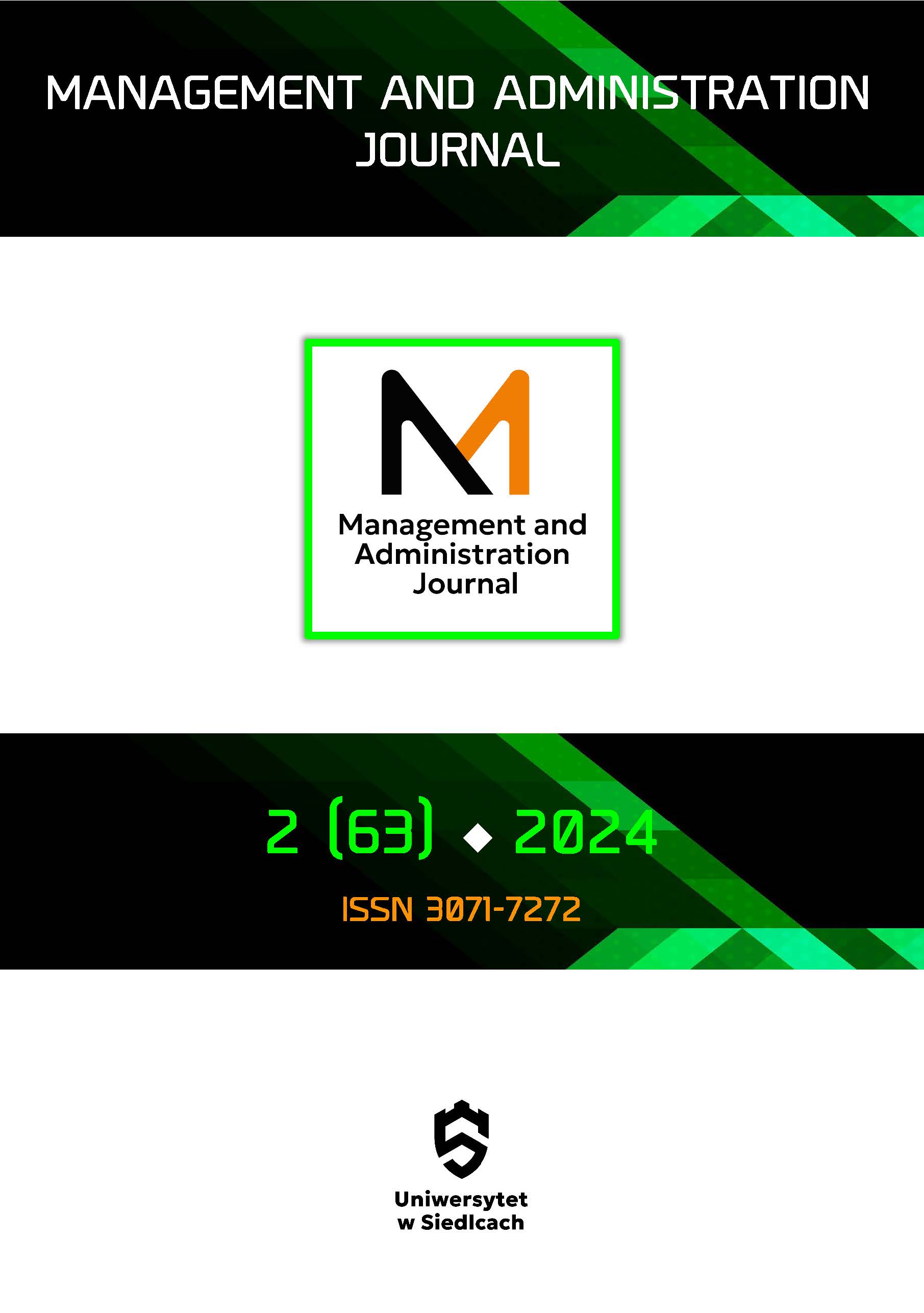SELECTED ASPECTS OF SAFETY MANAGEMENT IN RAIL TRANSPORT
DOI:
https://doi.org/10.34739/maj.2024.02.01Keywords:
safety management, rail transport, accidents, railway incident preventionAbstract
Rail transport safety management requires a comprehensive approach that includes legal regulations, advanced technologies, staff training and constant monitoring of the number and structure of accidents, incidents and events. The aim of the study is
to show the scope of rail transport safety management. The analysis was carried out based on data from the Office of Rail Transport and the Central Statistical Office. The study analyzed the number and structure of rail accidents as well as the causes of accidents, incidents and rail events. The analysis covered the years 2017-2022. The analysis showed that the accident measure, which is the ratio of the number of accidents to the size of operational work, decreased from 2.56 to 1.89 in the years 2017-2022. At the same time, in the same period, the number of incidents increased from 1256 to 1642. The statistical analysis also showed that there is a significant positive correlation between the number of rail incidents and events and operational work in rail passenger transport. Investing in research and development of new technologies and solutions that improve safety is key to the continuous improvement
of safety management. New technologies, such as artificial intelligence and data analysis, can significantly improve the ability to predict and respond to threats. Those responsible for the organization and operation of rail transport should strive to continuously
improve safety management systems.
Downloads
References
Awad, F.A., Graham, D.J., Singh, R., AitBihiOuali, L. (2023). Predicting urban rail transit safety via artificial neural networks. Safety Science, 167, 106282. https://doi.org/https://doi.org/10.1016/j.ssci.2023.106282.
Bondarabadi, M.A., Rahimi, H., Arefkhani, H., Kashani, A.T. (2023). A new approach to assess safety performance of rail regions with an emphasis on the resources and equipment of each region. Journal of Rail Transport Planning & Management, 25, 100371. https://doi.org/https://doi.org/10.1016/j.jrtpm.2023.100371.
Cao, Y., Liu, Y., Sun, Y., Su, S., Wang, F. (2024). Enhancing rail safety through real-time defect detection: A novel lightweight network approach. Accident Analysis & Prevention, 203, 107617. https://doi.org/https://doi.org/10.1016/j.aap.2024.107617.
Gawlak, K. (2023). Analysis and assessment of the human factor as a cause of occurrence of selected railway accidents and incidents. Open Engineering, 13(1), 20220398. https://doi.org/10.1515/eng-2022-0398
Gholamizadeh, K., Pamucar, D., Moslem, S., Basiri, P., Esztergár-Kiss, D., Mohammadfam, I. (2024). Decoding rail derailments: Unrave-ling the weighted factors influencing safety and sustainability using the best-worst method. Results in Engineering, 23, 102539. https://doi.org/https://doi.org/10.1016/j.rineng.2024.102539.
GUS. (2023). Transport-wyniki działalności 2022, Warszawa.
Hadj-Mabrouk, H. (2020). Application of Case-Based Reasoning to the safety assessment of critical software used in rail transport. Safety Science, 131, 104928. https://doi.org/https://doi.org/10.1016/j.ssci.2020.104928.
Han, S., Wang, W., Liu, X. (2021). A new type-2 fuzzy multi-criteria hybrid method for rail transit operation safety assessment. Applied Soft Computing, 113, 107927. https://doi.org/https://doi.org/10.1016/j.asoc.2021.107927.
Hlavatý, J., Ližbetin, J. (2021). Innovation in Rail Passenger Transport as a Basis for the Safety of Public Passenger Transport. Transportation Research Procedia, 53, 98–105. https://doi.org/https://doi.org/10.1016/j.trpro.2021.02.013.
Jabłoński, A. Jabłoński, M (2018), Mechanizmy efektywnego zarządzania bezpieczeństwem w transporcie kolejowym Warszawa CeDeWu.
Kang, L. (2024). Exploring a data-driven framework for safety performance management: A theoretical investigation at the enterprise level. Journal of Loss Prevention in the Process Industries, 91, 105384. https://doi.org/https://doi.org/10.1016/ j.jlp.2024.105384.
Lewiński, A. (2003). Safety of decentralised computer systems for railway transport management and control. Archives of Transport, 15(2) , pp. 75-93.
Łukasik Z., Nowakowski W. (2013). Zarządzanie bezpieczeństwem w transporcie kolejowym, Infrastruktura Transportu, nr 6, 46-48.
Łukasik Z., Nowakowski W., Kuśmińska-Fijałkowska A. (2014). Zarządzanie bezpieczeństwem infrastruktury krytycznej, Logistyka 4, 758-763,
Nedeliaková, E., Valla, M., Kubaľák, S. (2023). Transport Market and Status of Rail Freight Transport in the Context of Liberalization of Services. Transportation Research Procedia, 74, 202-209. https://doi.org/https://doi.org/10.1016/j.trpro. 2023.11.135.
Novales, M., Bertrand, D., Fontaine, L. (2019). A proposed new approach to light rail safety management in Spain and other countries. Safety Science, 118, 740-751. https://doi.org/https://doi.org/10.1016/j.ssci.2019.06.010.
Nyszk, W. Paszkiewicz, J. Szeląg, K., Wołejszo, J. (red.). (2014). Zarządzanie bezpieczeństwem w transporcie kolejowym. Warszawa: Akademia Obrony Narodowej.
Pilbeam, C. (2024). Practices and challenges of safety management in outsourced facilities management. Journal of Safety Research, 90, 144-162. https://doi.org/https://doi.org/10.1016/j.jsr.2024.06.011.
UTK. (2023). Sprawozdanie z funkcjonowania rynku kolejowego w 2022 roku. Warszawa.
Vivek, A.K., Gupta, S., Khan, T., & Mohapatra, S.S. (2024). Strategies to mitigate safety and associated problems at gated rail road grade crossing: A structural equation modelling approach. Transport Policy, 146, 19–30. https://doi.org/https://doi.org/10.1016/ j.tranpol.2023.11.002.
Zuo, L. (2022). Public safety risk prediction of urban rail transit by using Network node detection and machine learning. Optik, 170464. https://doi.org/https://doi.org/10.1016/j.ijleo.2022.170464.
Published
Issue
Section
License
Copyright (c) 2024 Management and Administration Journal

This work is licensed under a Creative Commons Attribution-NonCommercial 4.0 International License.





